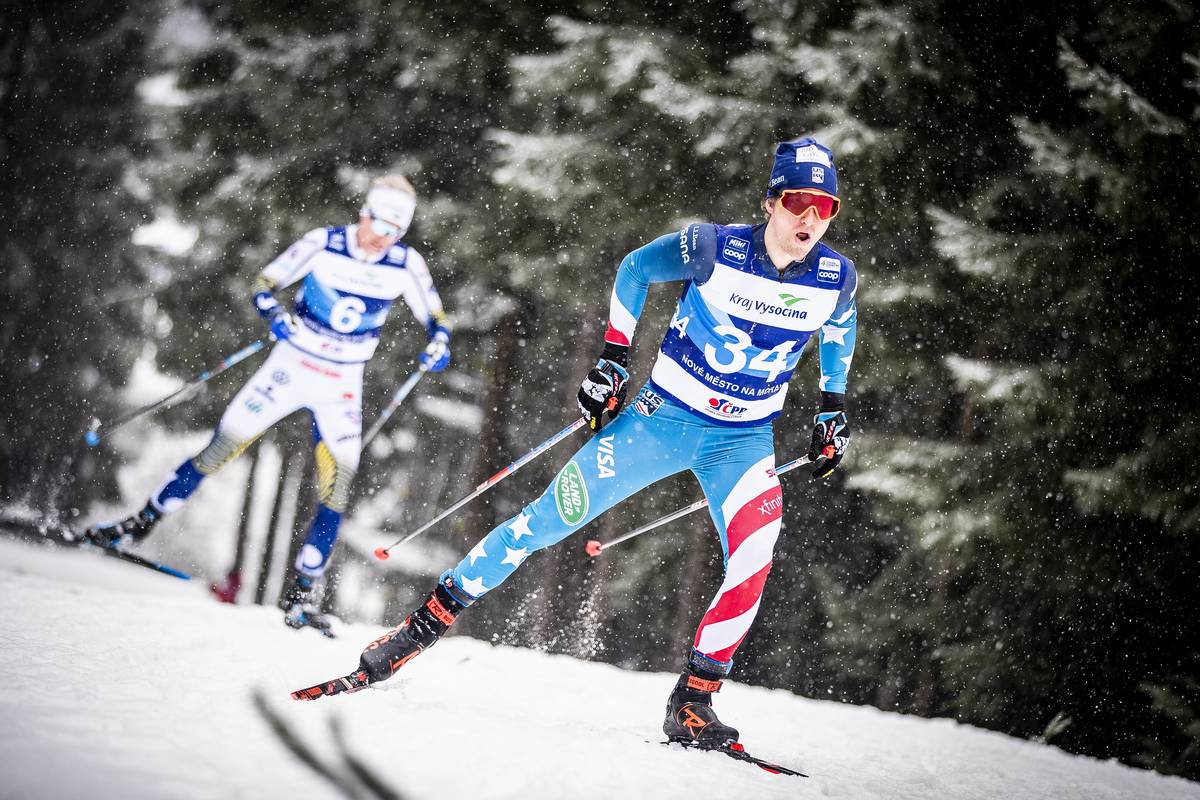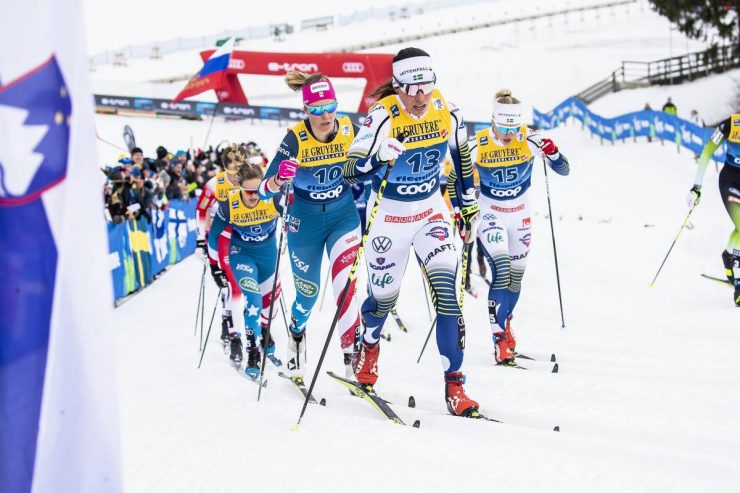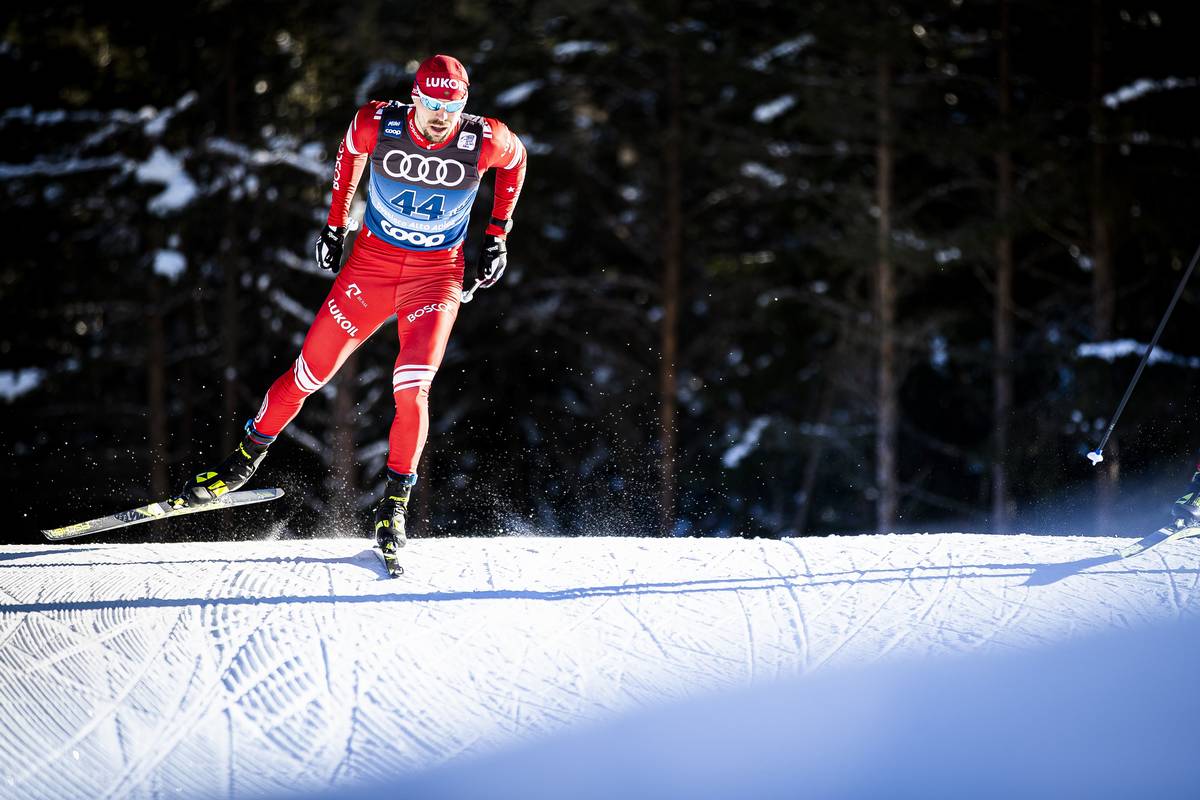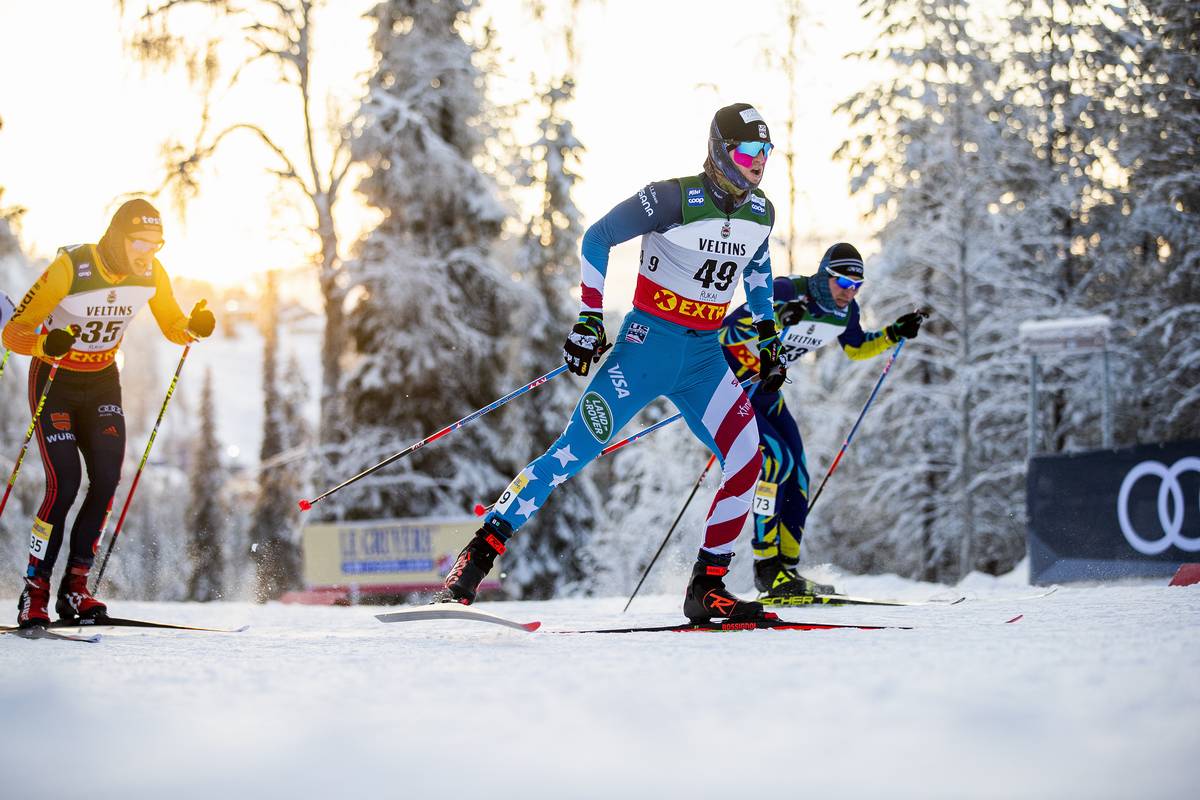
This is part two of a two-part story about U.S. skier David Norris who was recently diagnosed with Covid-19. Part one explores how Norris experienced the illness, whereas part two will look into some of the medical literature around athletes and COVID and how Norris plans to build fitness post-illness. You can find part one here.
We’re going to start where it counts when considering endurance sports: the heart. This elegant and complex organ, colloquially known as the “ticker”, pumps the blood and motors the movement of oxygenated blood throughout the circulatory system and fosters a return trip for deoxygenated blood to the lungs. And then a repeat – for approximately 100,000 beats per day. Round and round it goes.
Covid-19 still ravages. It would be curt to place the moral equivalency of a return to sport to a return to normalcy for those without resources or at high risk due to comorbidities. The wellness aspects of sport are well-documented. Nearly a year into the pandemic, the consensus on a proper return to sport for athletes infected with Covid-19 has become, if not crystal clear, certainly less opaque.
Beyond reduced lung capacity for those with compromised lungs post-Covid, a primary concern for athletes contracting Covid-19, or reason enough for avoiding it altogether, has been the prospect of heart abnormalities, primary among them myocarditis. Myocarditis, or inflammation of the heart, is linked to viral infections. Medical journals have documented sudden death syndrome in some athletes with the condition. Not all who contract Covid-19 develop myocarditis and not all who exhibit heart inflammation suddenly die when exercising. Although rare, it is worth monitoring in athletes and non-athletes alike.
As the pandemic began to roar, the buzz in the sports community focused on this potential cardiovascular Covid-19 side-effect. In late September, The New York Times Magazine published a piece citing two studies indicating myocarditis might be linked to positive Covid-19 athletes. The studies did not categorically prove if A then B. It was more like if A then in some cases it might be B. Matter of fact, if you valued even low-intensity pursuits, and especially those providing wellness through access to nature, your attention may have been grabbed.
The same was true for David Norris, a prominent U.S. skier to test positive for Covid. Norris had been offered both Period I World Cup starts and a Tour de Ski start but declined them due to his diagnosis in mid-November 2020.
His return to sport (RTS) involved electrocardiograms, tests for troponin levels (elevated levels are an indication of myocarditis), and a markedly conservative approach to exercise.
Norris took two weeks rest after his symptoms subsided. According to Norris, his loss of smell was not considered in the catalog of symptoms when deciding on his return to training. When he finally took to skis again, easy was his mantra. “If the terrain is flat I might be V1-ing across, and on a hill that I normally just ski right up, I might do the coach’s skate,” Norris told FasterSkier in an early December interview. “But it wasn’t like I was straining to ski easily. I did that for a whole week, just one session per day for roughly 45 minutes to an hour.” That single session involved running or skiing.
For his second week of training, he skied an hour per day. His third week doubled the hours: an hour ski in the morning and an hour ski in the afternoon. This plan, a prescription of only easy distance, continued through roughly December 21.
“Christmas week I did my first intervals,” emailed Norris. “Tuesday I did 3×10 level 2-3 then Friday I repeated 3×10, but in true level 3. I have been really careful to keep to my prescribed zones. Generally, unless I am approaching an important race or coming off illness I am not strict with my zones as I tend to just listen to how my body is feeling.”
The week beginning December 28, Norris began to tone his upper threshold.
“I plan to do two intervals sessions that build from level 3 into some level 4,” explained Norris. “If all goes well I hope to do quite a hard session next week and possibly a time trial by the end of next week. My goal is to return to the World Cup following the Tour de Ski and earn a spot on the World Championship team. I was in great shape this fall and now I’ve been forced to rest and build back. Obviously, this isn’t the way anyone would want their season to go, but I believe good results and progression as an athlete is still possible for me this winter.”
Norris, with the advice of several physicians, believes he has a path forward back to the upper echelons of the sport.

Sweden’s Charlotte Kalla (33) was the highest-profile international cross-country athlete to test positive just before the start of the World Cup season in November. In a translated article from the Swedish daily, Espressen, the national team doctor said, “We have a potentially very serious infection. We know that this virus has a tendency to settle on the heart. And that is precisely the aspect we are most worried about when it comes to cross-country skiing, because it is one of the sports that places the highest demands on the heart. There we have to be extra careful with how we handle the return to training.”
Four years ago, Kalla suffered from atrial fibrillation before the race season and was sidelined for rest and testing. The former World Championship and Olympic medalist was not short-listed for Sweden’s Tour de Ski team. According to some media reports, she has resumed training and participated in internal Swedish National Team competitions. Kalla had originally opted to not race the 2021 Tour de Ski but had recently expressed interest in the event after missing Period I racing. She ultimately was not named to start the race. The FIS database lists Kalla as the winner of two FIS races in Sweden on Jan 8 and 10, respectively.

Russia’s Sergey Ustiugov, a former World Champion and still young at 28 years old announced on Instagram he had contracted Covid in October while training in Italy. According to a translation, Ustiugov suffered. He attempted to restart training in November and decided that was a mistake. “I tried to start training in November, slowly getting involved, but all my attempts were, unfortunately, in vain, my body refused to adequately perceive the proposed load and each time I fell into a hole,” the translated posted stated.
On December 27, the Russian posted an image on Instagram in which he donned a bib and was at the start line.
Across the board, it appears that the return to sport after testing positive, whether it be the consideration of heart issues, possible clots, or fatigue associated with long-haul Covid-19, should be tempered. Caution reigns supreme. Rare, if it all, are calls for an immediate return to vigorous or even mild exercise for those symptomatic for Covid.
The British Journal for Sports Medicine recommends a six-stage protocol lasting approximately 18 days before what it calls a “return to competition”. The BJSM calls the progression a GRTP, or graduated return to play protocol. The graduated return is perhaps best described as a sliding scale for each individual and their baseline metrics like respiratory function, for example, but also their comorbidities. The more at risk an athlete, the more conservative the graduated return to play.
But also factoring into the decision and time frame to return is the nature of the sport. “Less aerobically intense sports like golf may progress quicker,” claims the BJSM. “Experience suggests that some athletes take over 3 weeks to recover.”

Practitioners of cardiovascularly taxing sports like cross-country ski racing know the endeavor falls into the more aerobically stressful side of the intensity curve. Using Norris as a sample size of one, he displayed no signs of myocarditis. His troponin levels were within the range of normal, and he never experienced issues breathing. Norris waited approximately 14 days before he broached even remotely intense levels of exertion.
Each one of us is unique. And it goes without saying that what works for Norris may not work for others. General guidelines for a return to sport are exactly that, general. Some are ready sooner, others not for a longer duration, beyond what might normally be expected.
Again, using a healthy heart as the benchmark for returning to sport, The American College for Cardiology (ACC) advises different protocols for different age groups. And then again, within those age cohorts, it differentiates its return to play advice between those asymptomatic and symptomatic individuals. Then again, a return to sport might look different between those exhibiting mild symptoms compared to those with acute manifestations of Covid-19.
Presuming an athlete has been cleared of myocarditis or any other underlying heart conditions, the ACC states, “when considering the question of return-to-play, we believe there are three variables to consider: (1) How recent was the COVID-19 infection? (2) How severe was the infection? (3) What is the physical activity or sport being considered?”
Lastly, heart conditions in endurance athletes manifested long before Covid-19. The attention paid to athletes and heart conditions is not new. As recently as 2017, FasterSkier reviewed cyclists Lennard Zinn’s book, The Haywire Heart, which examined his terrifying experience with heart arrhythmias. Zinn, a well-known cyclist, had existed for the ride – many long and grueling rides over years. Causation is a tough thing to prove. We’ll leave that for others to debate. But the evidence is there that Zinn’s massive and high-exertion miles over decades may have altered his heart’s electric pathways.
This much is clear considering Covid and the heart: if you suspect a compromised ticker, rest and get expert advice. Although technical, the information from a JAMA Cardiology paper titled, “Coronavirus Disease 2019 and the Athletic Heart: Emerging Perspectives on Pathology, Risks, and Return to Play,” raises some questions about how a normal athlete’s heart might exhibit qualities similar to a heart affected by Covid-19.
From JAMA Cardiology:
“Further, abnormalities that have emerged as markers of COVID-19 cardiac injury may overlap with normal physiology and the established attributes of the athlete’s heart.18 For example, bouts of exercise in individuals in good health often lead to a transient elevation in troponin level and short-term imaging findings suggestive of cardiac fatigue, including myocardial inflammation and tissue edema.19,20 Similarly, benign consequences of longer-term exercise training, including mild reductions in left ventricular ejection fraction21 and nonischemic myocardial fibrosis, may further complicate the diagnosis of cardiac injury secondary to COVID-19.22″
If like Norris, you are cleared to ramp up your exertion levels and possibly eye World Cup starts, or a major goal like chasing down a 50 k race at a more pedestrian speed, both of which are worthy goals, your return to sport should be monitored, sensible, and grounded in being around for the long-term.

Jason Albert
Jason lives in Bend, Ore., and can often be seen chasing his two boys around town. He’s a self-proclaimed audio geek. That all started back in the early 1990s when he convinced a naive public radio editor he should report a story from Alaska’s, Ruth Gorge. Now, Jason’s common companion is his field-recording gear.



